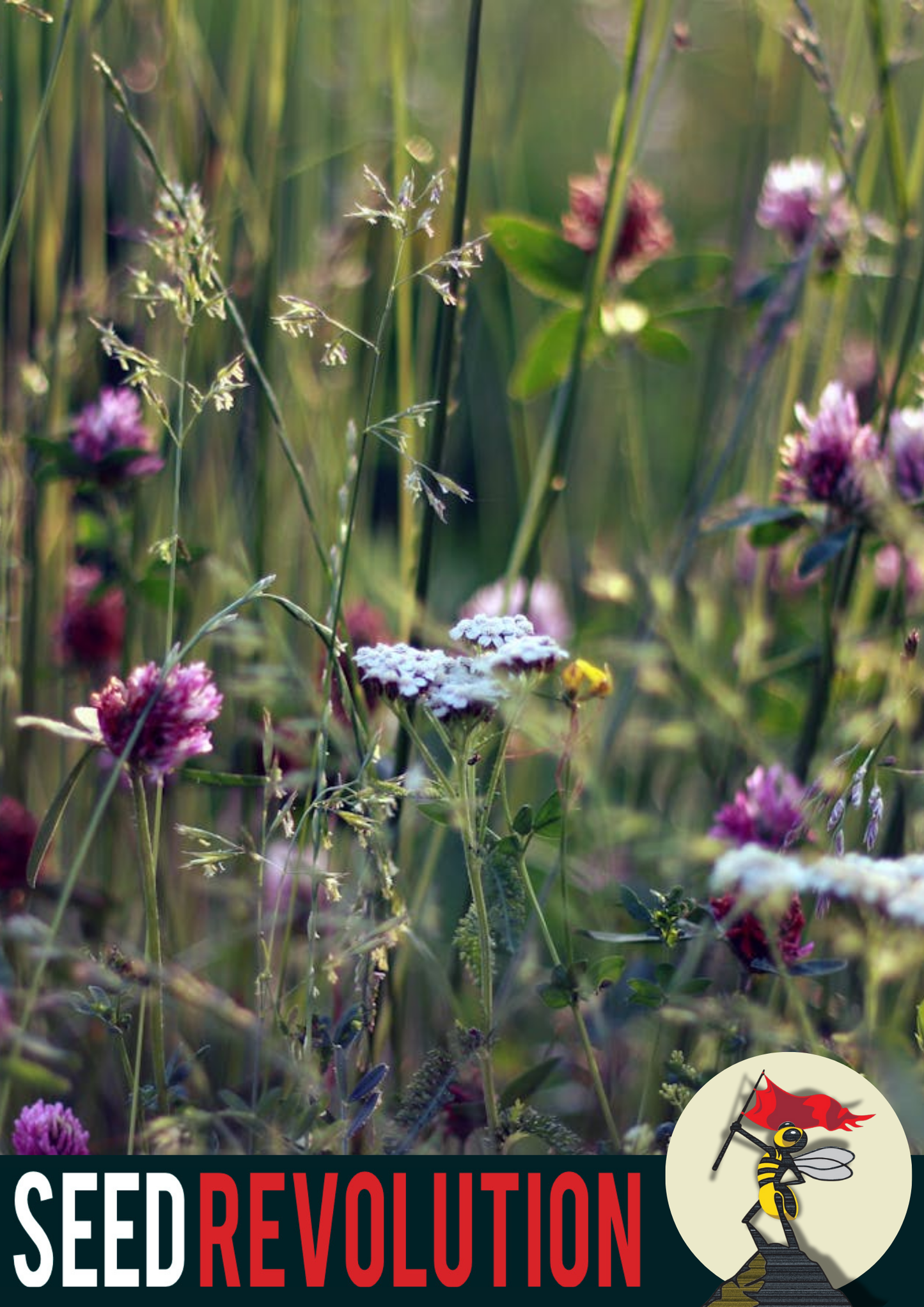Seed Revolution
Clay Soil 100% Wild Flower Mix
Clay Soil 100% Wild Flower Mix
Couldn't load pickup availability
A mix for those with clay soils. Clay soils are great for farming, not quite so for gardening and as wildflowers can be tricky to establish at the best times, having species suited to your soil gives them the best chance.
The tell tale signs of clay soils are little moisture, whilst lumpy and containing stones and flint. To test, place soil in a jar of vinegar. If it froths, you got clay soil.
How to Plant
Cheap and Easy Method:
For a quick and cost-effective approach, simply scatter the seeds directly onto bare soil. This method requires minimal preparation but has a lower success rate as it heavily relies on natural conditions being favourable. Clear the area of any debris and lightly rake the soil to create a loose surface. Evenly broadcast the seeds across the soil, then lightly rake again to ensure good seed-to-soil contact.
More Involved Method:
For better results, especially in areas with aggressive weeds or where the soil may be particularly challenging, consider using a terram membrane. This method involves laying a terram membrane over the planting area to suppress unwanted vegetation. Over this membrane, add a layer of soil that is suitable for clay conditions. Sow the seeds evenly across the soil surface and gently press them in to ensure good contact. This method, while more expensive and labour-intensive, greatly enhances the likelihood of establishing a vibrant and sustainable meadow.
Why Choose a 100% Flower Mix:
A 100% wild flower mix differs significantly from an 80/20 wild flower grass mix. In a 100% flower mix, all the seeds are from wild flowers, resulting in a meadow densely packed with colourful and diverse flowering plants. This is ideal for creating a visually stunning display and providing a rich habitat for pollinators such as bees and butterflies. In contrast, an 80/20 mix includes 80% wild flowers and 20% grasses. This blend is beneficial for establishing a more balanced ecosystem, as the grasses provide structural support and habitat for various insects and wildlife, and help to stabilize the soil. However, for pure floral beauty and higher pollinator support, a 100% flower mix is preferred.
When to Plant
The optimal time to plant your Clay Soil 100% Wild Flower Mix is in the spring (March to May) or early autumn (September to early October). These periods offer the best temperatures and adequate moisture levels for seed germination and root establishment.
Where to Plant
This mix is specifically designed to thrive in clay soils, which are typically heavy and retain moisture well. Choose a location that benefits from these soil properties, ensuring good drainage to prevent waterlogging. Areas with full sunlight to partial shade are ideal.
Watering Schedule
Clay soils naturally retain more water than sandy soils, so watering needs may be reduced. During the initial establishment phase, ensure the soil remains moist but not saturated. Water gently to avoid washing away the seeds. Once established, the plants will generally require minimal watering, relying primarily on natural rainfall. However, during prolonged dry periods, occasional watering may be necessary to maintain healthy growth.
Blooming Period
The wildflowers in your Clay Soil 100% Wild Flower Mix will generally bloom from late spring through to late summer, approximately May to August. This blooming period can extend slightly, depending on local climate conditions and the specific timing of your planting.
Expected Plant Height
The plants in this mix will vary in height, generally ranging from 20 cm to 1 metre. This variation creates a textured, dynamic appearance that provides depth and interest, while also supporting a diverse range of wildlife and pollinators.
What you get
Wildflowers Included in the Mix
- Betony (Stachys officinalis)
- Birdsfoot Trefoil (Lotus corniculatus)
- Black Medick (Medicago lupulina)
- Common Agrimony (Agrimonia eupatoria)
- Common Cat's Ear (Hypochaeris radicata)
- Common Sorrel (Rumex acetosa)
- Cowslip (Primula veris)
- Field Scabious (Knautia arvensis)
- Foxglove (Digitalis purpurea)
- Lady’s Bedstraw (Galium verum)
- Meadow Buttercup (Ranunculus acris)
- Meadowsweet (Filipendula ulmaria)
- Musk Mallow (Malva moschata)
- Ox-eye Daisy (Leucanthemum vulgare)
- Ragged Robin (Lychnis flos-cuculi)
- Ribwort Plantain ( Plantago lanceolata)
- Self Heal (Prunella vulgaris)
- Sheep Sorrel (Rumex acetosella)
- Tufted Vetch (Vicia cracca)
- Yarrow (Achillea millefolium)
- Yellow Rattle (Rhinanthus minor)
No Grow No Fee
Minimum of 2 years post sowing before claim can be made.
Share


